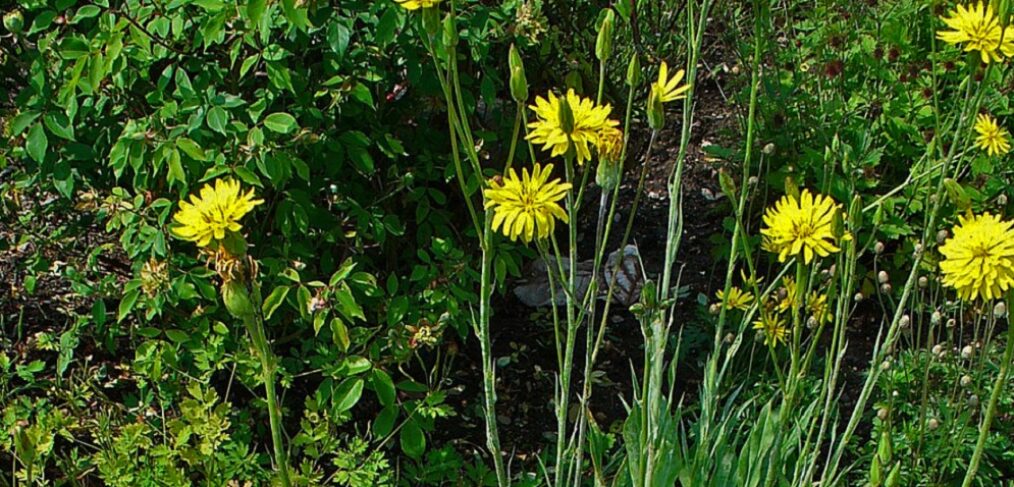
species of the week #81 – black salsify
The salsify, which some may know as an unloved vegetable at grandma’s, is actually a beautiful flowering plant. It is hardy and forms a cylindrical turnip that is well protected from frost by its special black corky skin and can therefore be harvested as a winter vegetable. Poor people’s asparagus” is particularly popular in the Benelux countries, France and the German border regions.
| Distribution status | Extremly rare |
| Remaining deposits | Southern Palatinate, Rhenish Hesse |
| Last sighting in rhineland-palatinate | current |
| Habitat | Dry grassland |
| Threat | Over-fertilisation, loss of habitat, abandonment of use |
Black salsify is not only a foodstuff, but also an exciting flowering plant. After sowing in spring, a rosette-like plant with elongated leaves initially forms in the same year. These are slightly toothed and about 25 to 35 cm long. In the cultivated varieties, a cylindrical main root (thin turnip) forms the well-known black salsify.
In the second year, the salsify forms a beautiful flower that smells slightly of cocoa. The garden salsify and the low salsify, which is also threatened with extinction, flower yellow, while the equally threatened purple salsify flowers purple. The seeds resemble dandelion seeds and are spread by the wind, but also by ants, which like to carry the seeds away.
The salsify is an important part of their special habitats and its flowers are a food source for many insects. Therefore, in the 19th and early 20th century, experiments were conducted with feeding silkworms with black salsify leaves. The aim was to boost domestic silk production and provide an alternative income for the war-disabled during the First World War.
The purple and garden salsify prefer dry, sunny calcareous grasslands. The low black salsify is only found on moorland and moor grass litter meadows. Over-fertilisation and the loss of lean sites is one of the main threats to all blackroot species. In 1900, they were still found throughout the country from Rhineland-Palatinate to Brandenburg. The low black salsify, which lives on wet litter meadows, is additionally burdened by the abandonment of extensive use and desiccation due to drainage and climate change.
Under no circumstances should existing wild stands be picked or dug up! Wild stands have been specially protected by the Federal Species Protection Ordinance since 1987!
Click here for more interesting species of the week
Image: By H. Zell – Own work, CC BY-SA 3.0, https://commons.wikimedia.org/w/index.php?curid=11073063
